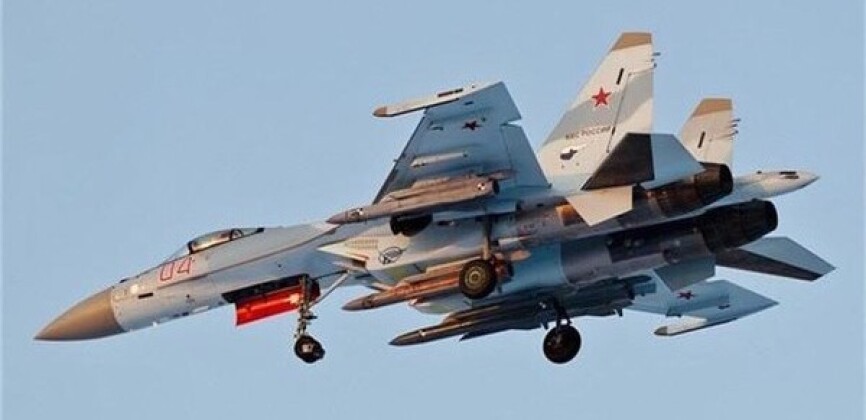News
Iranian Air Force Chief Announces Plans to Acquire Russian Su-35 Fighters: How Likely is a Sale?
Commander of the Air Force of the Islamic Republic of Iran General Hamid Vahedi announced on September 4 that the service is currently considering acquiring Su-35S fighter aircraft from Russia, highlighting that the final decision rested with the Army Command and the Armed Forces General Staff Command. He added that acquisitions of the Su-30 fighter were not currently on the agenda. The announcement follows years of speculation of a possible Iranian acquisition of new fighter aircraft from overseas, with the country having shown a strong interest in Russian and Soviet fighter jets in the late 1980s and early 1990s before a Russian embargo imposed under U.S. pressure, followed by a UN arms embargo from 2007-2020, ended such possibilities.
Iran previously acquired two squadrons of MiG-29 fighters and a single Su-24M strike fighter squadron from the Soviet Union, which remain its only acquisitions of fourth generation aircraft since the 1970s. While the MiG-29s current guard Tehran, these airframes are considered obsolete today due to a lack of meaningful upgrades. The Su-35 represents a much heavier and more capable fighter class, and other than the new Su-57 fifth generation fighter is the most capable in terms of air to air capabilities which Russia has offered. The aircraft has played a major role in operations against the Ukrainian Military and gained multiple kills against Ukrainian fighters including heavyweight Su-27s. Although one was reportedly shot down from the ground, none have been lost in air to air combat.

The potential sale of Su-35s follows speculation from Western media outlets that Russia could exchange the fighters for Iranian drones, with a number of Iranian unmanned aircraft having been extensively combat tested in neighbouring states and some fielding advanced stealth capabilities. While Iranian military units gained considerable experience operating alongside the Su-35 during joint operations against Western-backed insurgents in Syria in the 2010s, Russian forces also gained experience in the operations of Iranian drones which played a major role in the campaign including on one occasion carrying out an airstrike on U.S. forces in the theatre.
Iran was speculated in the mid 2010s to be considering acquisitions of Russian Su-30 fighters and licence production of the class domestically. The Su-30 is based on the same Flanker airframe design as the Su-35, but is a cheaper less capable aircraft produced at a much lower cost and without a specialisation in air to air combat, with notable shortcomings including its radar and engines. The Su-35 is prized for its three dimensional thrust vectoring capabilities, its very long range unrivalled among air superiority fighters, its high situational awareness provided by use of three phased array radars, and its access to a very wide range of advanced munitions types.

It was previously speculated that Iran would favour China’s J-10C lightweight fighter over the Su-35, with the Chinese jet benefitting from more modern avionics and access to the advanced PL-15 and PL-10 air to air missiles while having much lower acquisition and operational costs. The Su-35 remains better suited to controlling larger areas and projecting power beyond Iranian airspace, although whether Russia will accept barter transactions, accept Iranian modifications, or provide access to its latest R-37M or R-77M air to air missiles may be among the factors determining whether Iran proceeds with an acquisition.
Su-35 squadrons could replace older U.S.-supplied F-4D Phantoms in service, and would provide a much heavier complement to Iran’s indigenous Kowsar lightweight fighter which is currently in production. The aircraft have previously been exported at approximately $1 billion for 12 aircraft, although the price depends on multiple factors including the kind of weapons they are equipped with. A Su-35 acquisition would come as Iranian adversaries have continued to prepare for possible military operations to target the country’s nuclear infrastructure and other military targets. It also comes as Russia and Iran have moved to more closely integrate their economies in the face of Western economic warfare efforts, and as other potential clients for the Su-35 have been threatened with Western economic sanctions as part of a campaign to isolate the Russian defence sector from overseas funding.












